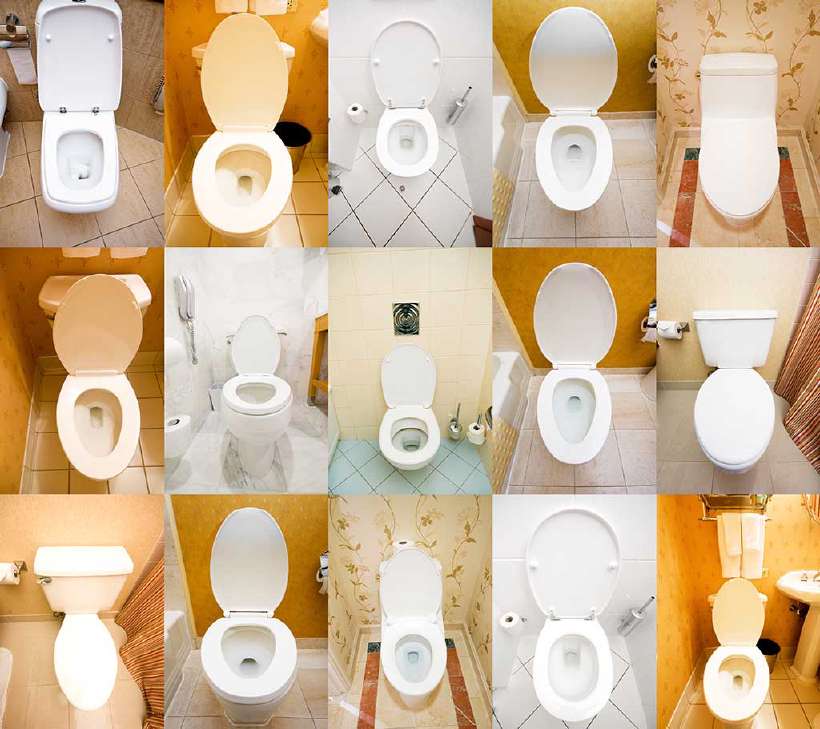How do Flush Toilets Work?
Home / Science for Kids / 5Ws & H For Kids / How do Flush Toilets Work?
Toilets are an amazing invention. Nearly every home has at least one. It is a very necessary utility needed in all homes to maintain hygiene. It is really amazing how this system works – you press a lever or pull a chain and whoosh! About two gallons of water rushes down into the porcelain bowl in three and four seconds. Gurgle-gurgle-urp it is clean and ready for use again!
Toilets were known in India as early as three thousand years ago! Excavations at Harappa revealed drainage facilities with effective sanitation. However, the Chinese were the first to use flush toilets. Archaeologists found a two thousand year old antique latrine belonging to the Han Dynasty complete with running water, a stone seat and a comfortable armrest. It was a fact that French king Louis XIII had his toilet fashioned after his throne.

The toilet is a simple mechanism. Let’s plunge into the depths of the toilet tank to know how it works. Does your toilet have a tank that is visible? Remove the cover and take a look inside. You can see a float ball attached to a handle and a U-shaped tube protruding from the water.
Whatever the design, every toilet commode consists of a bowl, the flushing mechanism and, a refill mechanism.
The basic toilet mechanism is the bowl. Even without a tank to flush water, the bowl does all the functions a toilet needs to perform. Most Indian homes have only the bowl which is called an Orissa Pan.
The bowl is attached to a pipe with a U-bend to the sewer. When you pour a bucketful of water in the bowl, the water comes in fast. The excess water goes through the bend and is sucked out and sent to the sewer pipe. As water empties out the bowl, air rushes in and this makes the distinct recognizable gurgling or “flush” sound. The air then stops the siphoning process.
However the siphon doesn’t work if you pour a glassful of water. The water level does not rise as the excess water spills into the bend immediately.
The tank attached just above the bowl acts like a reservoir. It stores enough water to send it fast enough into the bowl to activate the siphon. The tank takes a minute or so to fill up. When you press the lever or pull the chain all the water in the tank is dumped into the bowl in less than three seconds that is equal to pouring in a bucket of water.
The chain or lever is connected to the flush valve. It lifts the flush valve allowing water to slip through a drain hole. The drain hole is connected to the bowl and water flows in. As the tank of water enters the bowl rapidly it fills and activates the siphon and all the water and waste in the bowl is sucked out.
As the tank empties, the flush valve goes back to cover the drain hole. Now water comes into the tank to refill it.
Here is where the float ball comes in. The float ball is connected to a valve that automatically turns the water on and off. When the water in the tank reaches a certain level it holds up the ball so it floats level, shutting off the refilling mechanism. When the tank is empty the float ball falls free allowing the valve to open and fill the tank.
In the house, the toilet is the largest consumer of water as it washes down nearly 2.2 gallons at every flush. Considering the lack of adequate drinking water in most parts of the world it is perhaps best if we all shift over to gassifiers, a new water-free system of waste disposal scientists are working on.
647 words |
6 minutes
Readability:
Grade 6 (11-12 year old children)
Based on Flesch–Kincaid readability scores
Filed under: 5ws and h
Tags: #waste, #valve
You may also be interested in these:
Footprints on Earth
How Does the Steam Engine Work?
An Earth Day Fable
Papier mache Club
Matchstick Models